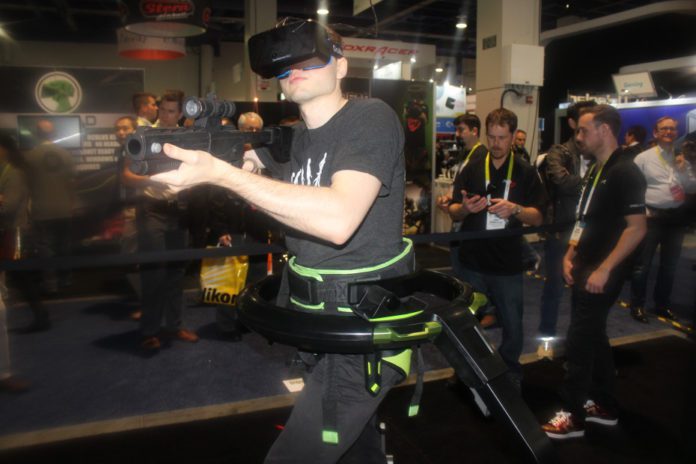In 1985, Nintendo asked children to suspend disbelief and embody the suspenders of an Italian plumber. He was in love with a princess who had been stolen by a giant green monster from a fantasy land, and united with his brother, went in search of her. Thus opens Super Mario Bros., a platforming master class in game design that urged us toward our next objective with one simple adage:
“Our Princess is in Another Castle”

All storytelling from the NES era is best described as minimalist, even RPGs like Zelda relied on sparse language to convey ideas. The medium has since exploded. Video games have pioneered many of the great ideas behind visual and interactive storytelling to the point where even the film industry looks at some of those best practices.
VR games have started to introduce storytelling, especially at the mainstream level with games like Resident Evil 7 and Bethesda’s coming lineup of VR titles. Could this shift toward storytelling drive demand for VR fitness, more immersive worlds, and greater physical challenges?
Creating Empathy
In 2013, Steven Spielberg and George Lucas discussed the merits of storytelling in gaming. During that talk, where both filmmakers argued gaming could never touch Shakespeare, Spielberg offered some intriguing insight:
“I think the key divide between interactive media and the narrative media that we do is the difficulty in opening up an empathic pathway between the gamer and the character”
Creating a plot isn’t enough, we need to make the audience feel something to remain engaged. Filmmakers do this by showing us events we can’t change, so our empathy is inspired by knowing the inevitable conclusion.
In gaming, developers aspire to create open-ended scenarios that force empathy out of interest. You end up caring because you want to know more about the world.
Take the zombie running app “Zombies, Run!” from Adidas. The application uses author Naomi Alderman’s work to tell a story that progresses only as you do. Runners are encouraged to speed up during zombie chases to avoid getting eaten, while they learn more about their missions for the day through an audiobook-like experience. Mystique and intrigue are powerful tools, with new seasons of content added each year to keep the world growing.
VR and Engagement
Games rely on immersion to be most effective, and VR is one of the better mediums for immersion. Locked into a virtual world, with the ability to move at your own pace and interact according to your own strengths, your suspension of disbelief fades fast.
[youtube https://www.youtube.com/watch?v=jspdtha3t1k?rel=0&w=560&h=315]
Fallout 4 would be the best example of a mainstream game with potential (even though early hands-on impressions suggest locomotion is limited to an analog stick). Bethesda games are known for their quirky quests and intriguing plot developments. They also hit players with hefty moral dilemmas, like whether or not to destroy an entire city or betray key companions.
Combined with some kind of treadmill-like setup, players would have everything they need for an immersive story full of exciting ethical challenges.
Missing Links
Arcades have always struggled to provide a long-term, engaging experience that keeps players coming back for more. Skill-based games, such as Street Fighter, gave players incentive to continue playing but didn’t rely on storytelling for repeat business.
With VR fitness, and the immersive worlds developers have managed to create, storytelling can become a powerful tool for that engagement. Your physical skill becomes an important motivator when an entire world relies on your talents. The more power players feel to manipulate worlds with meaningful consequences, the greater the effect of storytelling in VR.


